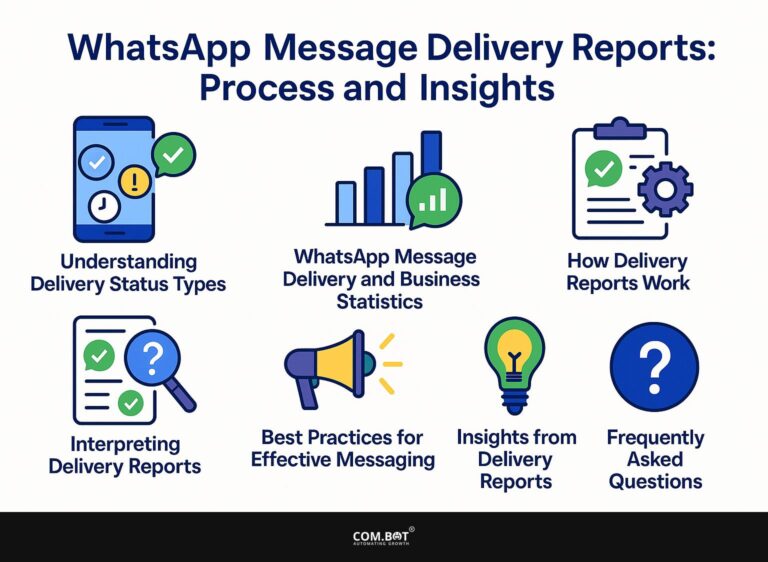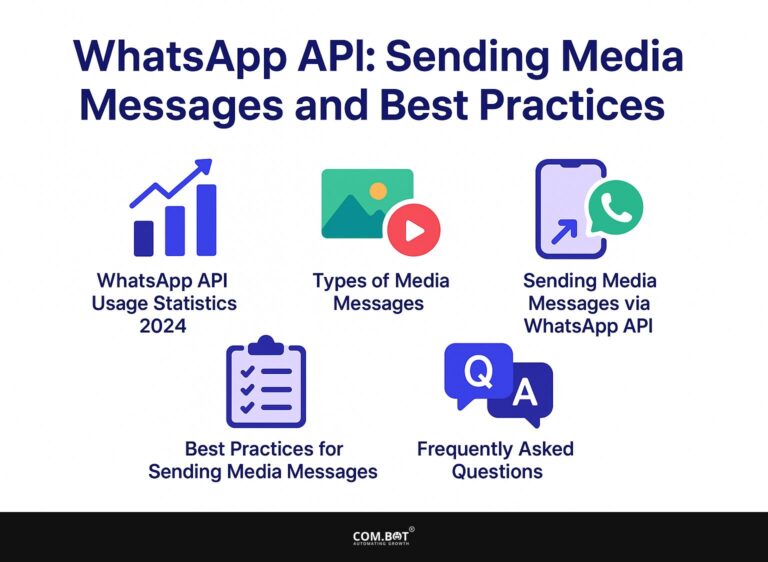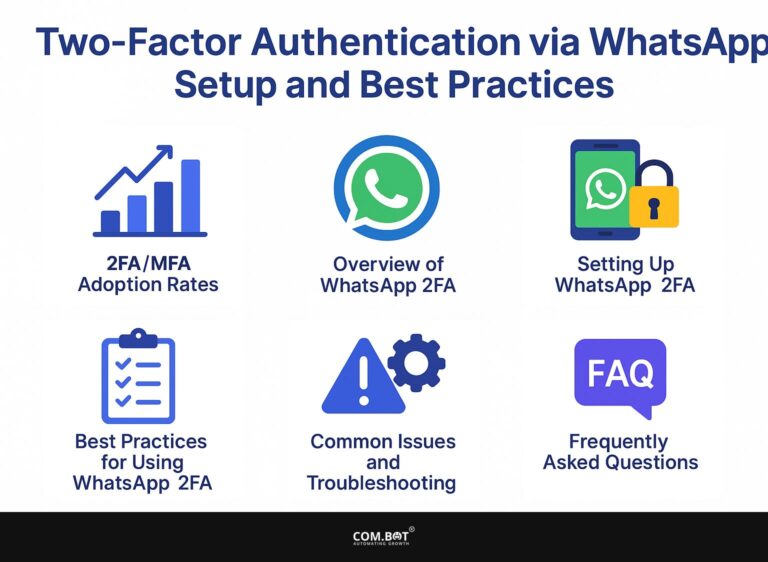Using WhatsApp Notifications: Setup and Benefits
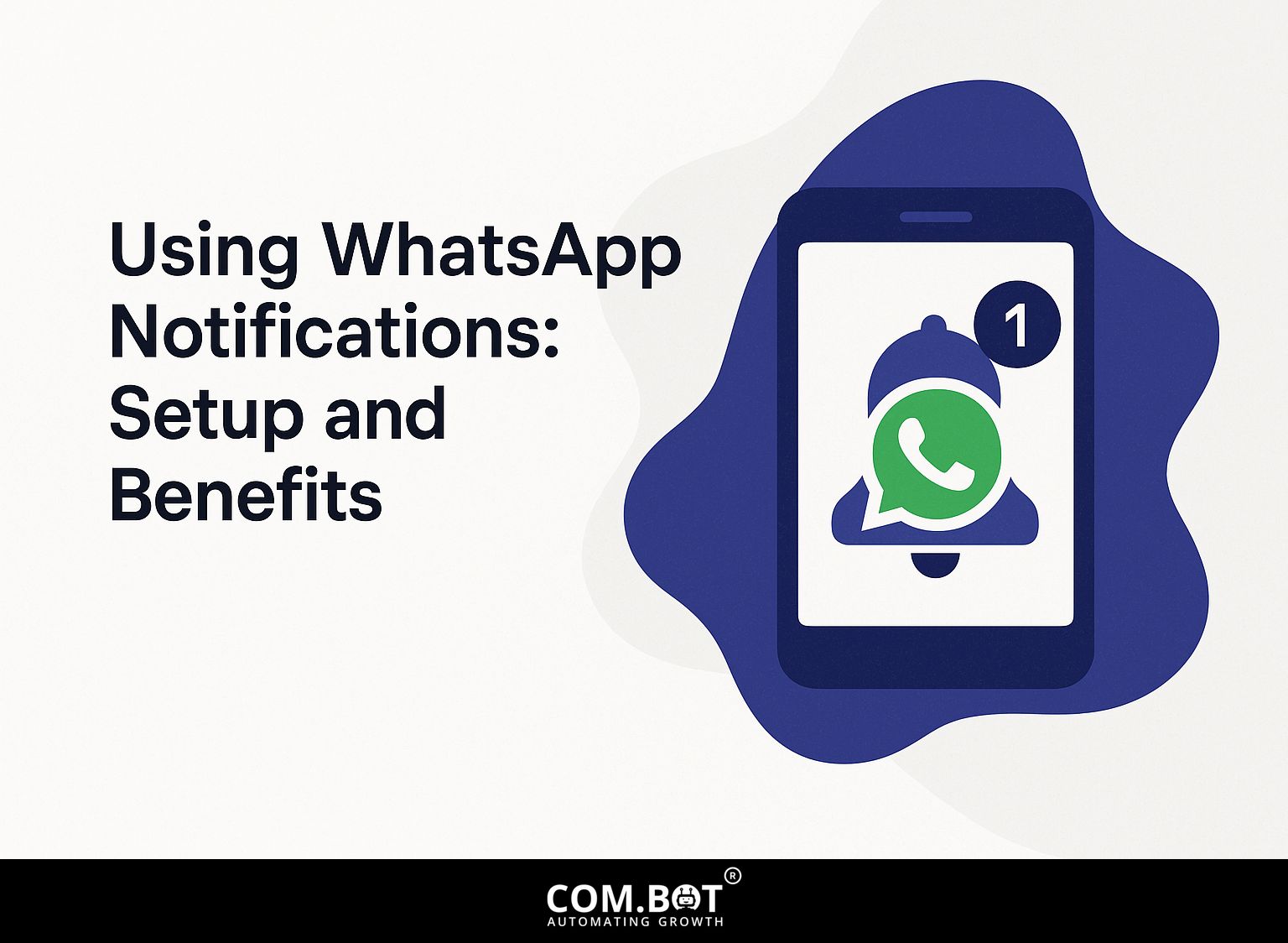
WhatsApp is important for customer service because many businesses have millions of users today. Companies like KLM Royal Dutch Airlines and Salesforce have tapped into WhatsApp Business for seamless communication. This article looks at how to set up WhatsApp notifications and their advantages, helping you improve interaction and offer excellent support. Learn how to improve your messaging plan and make your customer conversations better with this effective tool.
Key Takeaways:
- Stay connected in real-time with WhatsApp notifications for messages, groups, and media.
- Easily download and install WhatsApp, and enable notifications on your mobile device for improved communication.
- Benefit from better customer support, increased interaction, and flexible notification settings when using WhatsApp.
- 1 WhatsApp Usage Statistics 2024
- 2 Setting Up WhatsApp Notifications
- 3 Types of Notifications
- 4 Benefits of Using WhatsApp Notifications
- 5 Best Practices for Managing Notifications
- 6 Frequently Asked Questions
- 6.1 1. How do I set up WhatsApp notifications?
- 6.2 2. Can I receive WhatsApp notifications on my computer?
- 6.3 3. What are the benefits of using WhatsApp notifications?
- 6.4 4. Can I turn off WhatsApp notifications for specific contacts?
- 6.5 5. How do I know if someone has read my WhatsApp message?
- 6.6 6. Can I customize the sound of my WhatsApp notifications?
1. What are WhatsApp Notifications?
WhatsApp notifications inform users about new messages, media, and group updates, allowing seamless asynchronous communication. Notifications can be divided into different types, improving user experience.
- Message alerts notify you when someone sends a direct message, ensuring timely responses.
- Group chat updates let you know about new messages in shared conversations, which are essential for working together in teams.
- Media updates notify users of photos, videos, or voice messages received.
By customizing these notifications in the app settings, you can prioritize alerts based on importance, helping manage your time effectively and reducing distractions from unnecessary pings. For an extensive analysis of this trend, our comprehensive study on custom notifications features offers valuable insights into optimizing alert management.
2. Importance in Communication
Improving WhatsApp notifications helps customer service by supporting immediate conversations and user choices.
To maximize effectiveness, businesses should customize notification settings. For instance, priority message alerts for urgent inquiries can significantly improve response times.
Using WhatsApp Business’s quick replies allows customers to get fast responses. Research shows that replying quickly can increase customer happiness by more than 30%.
Using tools like quick replies and labels allows agents to organize conversations faster, providing a more organized and smooth service experience. Regularly looking at notification analytics can help improve these strategies, leading to better user engagement.
WhatsApp Usage Statistics 2024
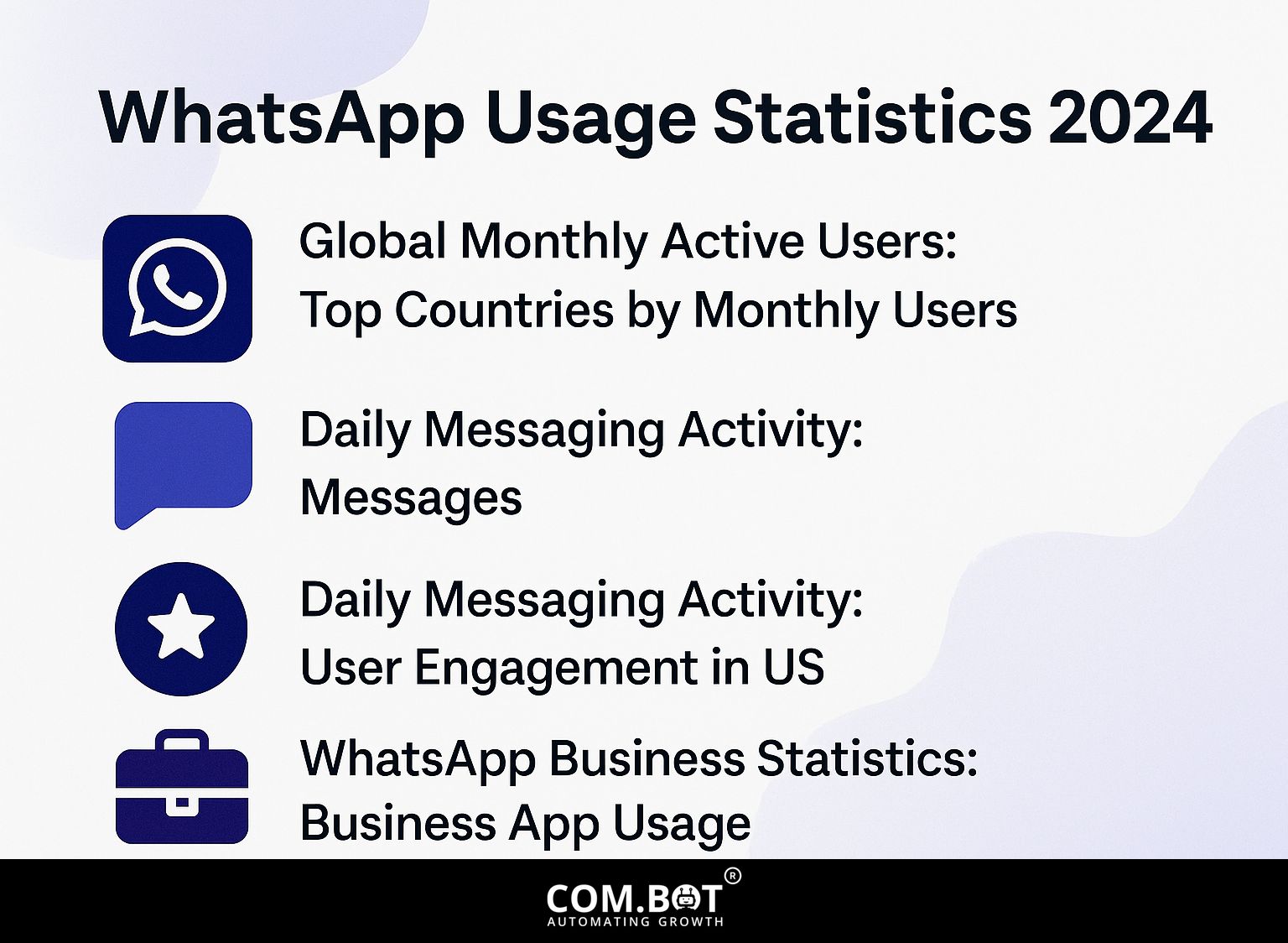
As we delve into WhatsApp usage statistics for 2024, it’s essential to consider the various campaigns that have influenced these trends. One of our hidden gems on large WhatsApp campaigns sheds light on this topic by exploring both examples and their profound impact.
Global Monthly Active Users: Top Countries by Monthly Users
Daily Messaging Activity: Messages
Daily Messaging Activity: User Engagement in US
WhatsApp Business Statistics: Business App Usage
The WhatsApp Usage Statistics 2024 The text gives a detailed look at how WhatsApp affects people around the world, focusing on who uses it, how they send messages, and how businesses use it. WhatsApp has cemented its status as a leading communication platform, evident from its diverse user base and high engagement rates.
Global Monthly Active Users data showcases WhatsApp’s widespread adoption in various regions. India 853.8 million active users, showing its importance in both personal and professional communication in a large country. Brazil Indonesia 148 million 112 million
- Daily Messaging Activity reveals staggering interaction levels, with 100 billion messages sent daily, demonstrating the platform’s integral role in daily communication worldwide. Additionally, 7 billion voice messages are exchanged daily, signifying a preference for voice communication alongside text.
- User Engagement in the US illustrates WhatsApp’s appeal, particularly among Gen Z and Millennials, with 60% engagement. Daily usage stands at 50%, while monthly usage reaches 91%, emphasizing WhatsApp’s indispensability in communication routines.
WhatsApp Business Statistics indicate growing business adoption. The WhatsApp Business app 200 million monthly active users and has accumulated 1.2 billion downloads, showcasing its effectiveness in facilitating business-consumer interactions. Businesses use WhatsApp to improve customer service, marketing, and operations.
Overall, the WhatsApp Usage Statistics 2024 data highlights the platform’s critical role in global communication, both personally and professionally. WhatsApp is important for many people and businesses because of its many users and regular use. It links people across various countries and fields, altering how they interact.
Setting Up WhatsApp Notifications
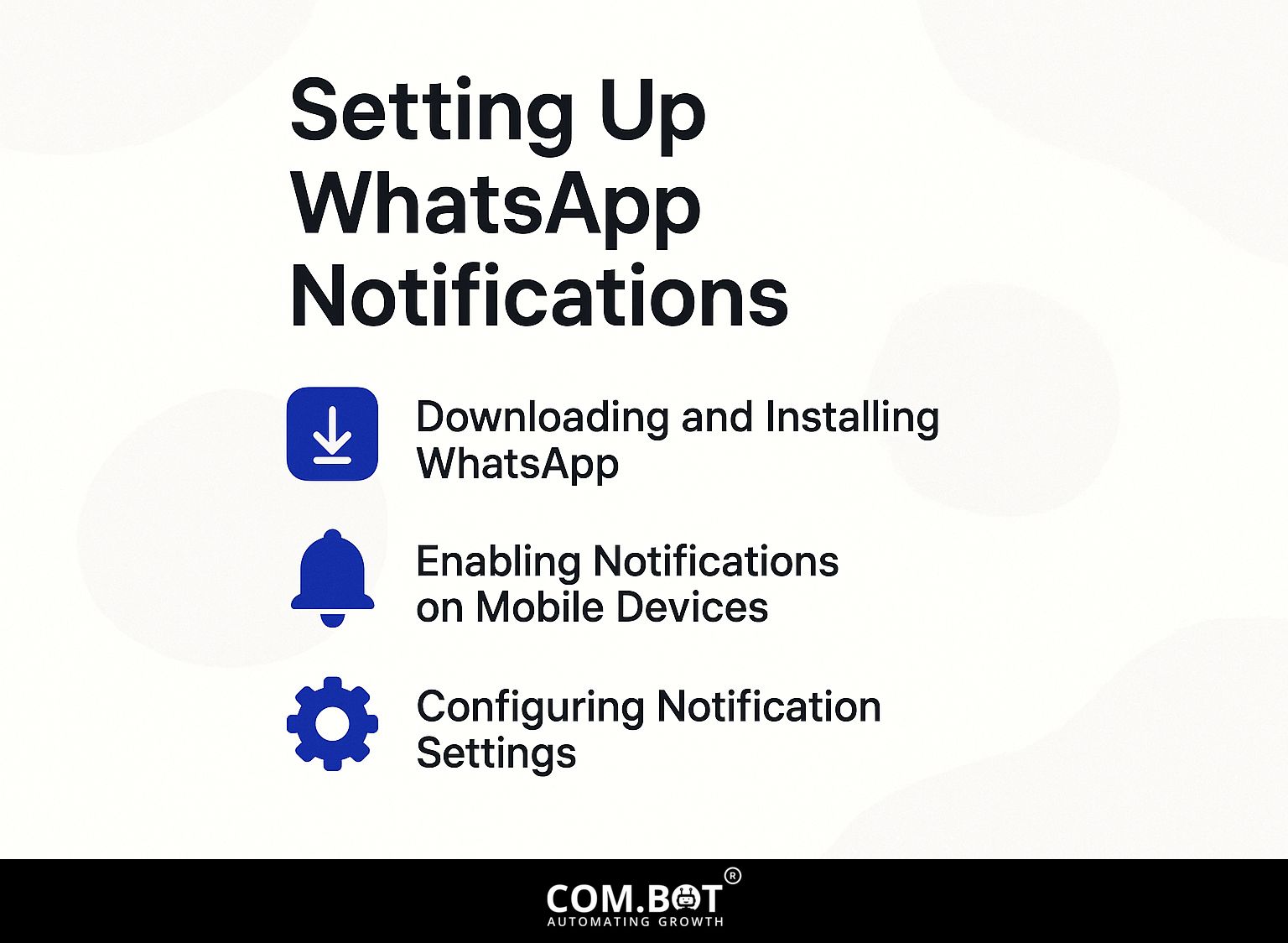
To set up WhatsApp notifications, follow these simple steps so you always receive important messages or updates. For a more comprehensive setup, you might also be interested in our guide on Webhook Integration with WhatsApp API.
1. Downloading and Installing WhatsApp
Getting WhatsApp is easy and doesn’t cost anything. You can find it on iOS and Android devices, and it often installs in less than 5 minutes.
To get WhatsApp, go to the App Store on iOS or Google Play on Android and look for ‘WhatsApp.’ Make sure you have at least 100 MB of free space on your device.
WhatsApp requires iOS 10 or later for Apple devices and Android 4.0.3 or higher for Android phones. Press ‘Get’ or ‘Install.’ After the app downloads, follow the instructions to set it up. After opening it, you’ll verify your phone number, and within moments, you can start messaging friends and family.
2. Enabling Notifications on Mobile Devices
To enable notifications on mobile devices, go to your device settings, select WhatsApp, and toggle notifications on for alerts.
On iOS, go to Settings, scroll to Notifications, select WhatsApp, and make sure ‘Allow Notifications’ is turned on. You can customize alert tones and banner styles here.
For Android, go to Settings, tap on Apps, choose WhatsApp, and turn on ‘Show Notifications.’ You can change the notification settings by picking sound or vibration options.
If you run into issues, check if Do Not Disturb mode is active, as it may silence notifications. For more help, visit WhatsApp’s help center for visual guides and tips on solving problems.
3. Configuring Notification Settings
Adjusting WhatsApp notification settings allows you to decide the timing and type of alerts you receive, improving your messaging experience.
To improve your notifications, start by changing the sounds for different groups and contacts one by one. Go to the chat, tap the contact’s name, and choose ‘Custom notifications.’
There, you can choose unique tones for different chats to help prioritize important messages. For vibration patterns, pick from standard options or customize using examples like short bursts for regular chats versus prolonged vibrations for urgent ones.
Make sure your volume is set right-too loud can cause interruptions, while too quiet might mean you miss important notifications. Set the volume so you can hear it clearly without causing a disturbance.
Types of Notifications
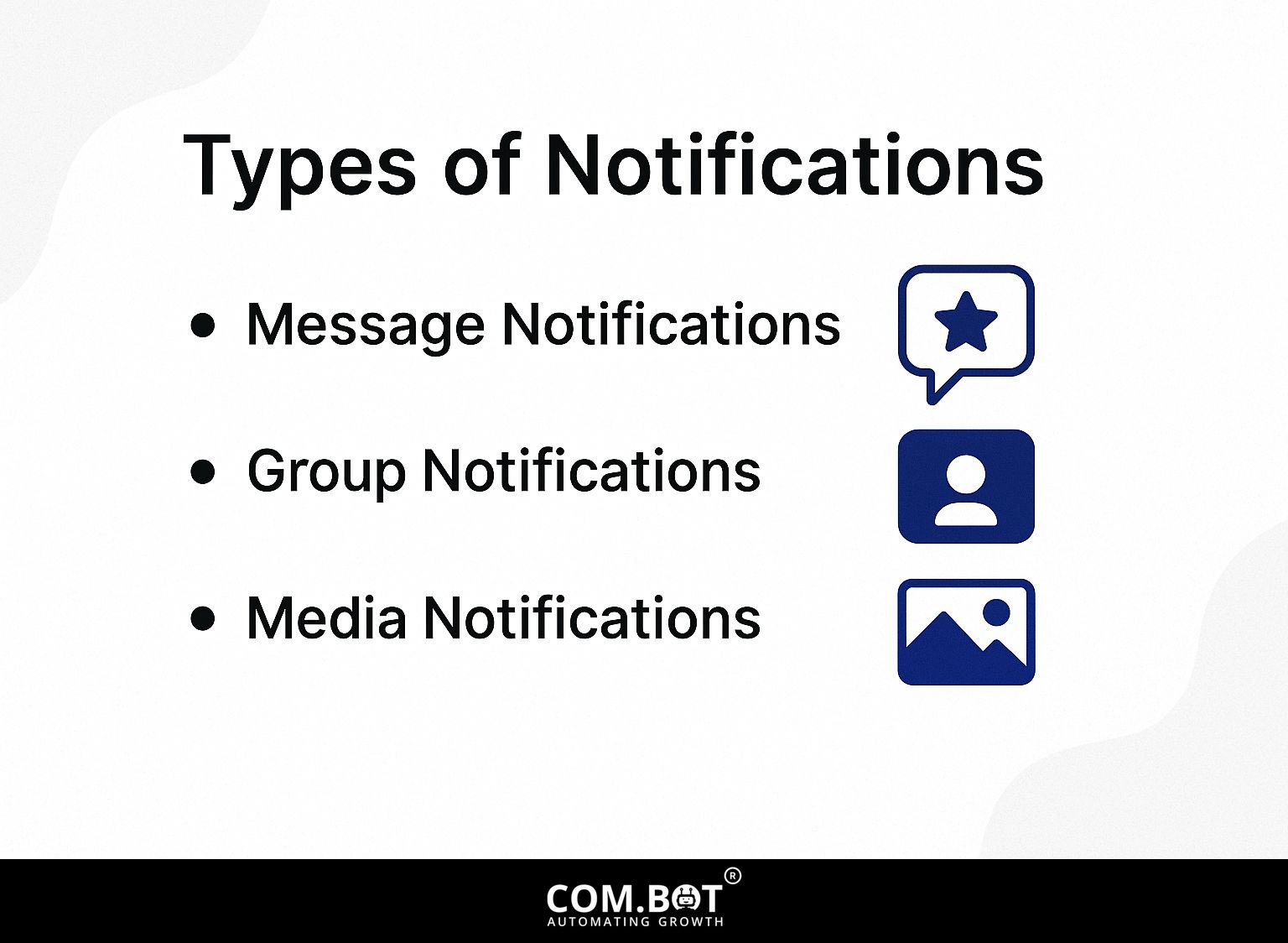
WhatsApp organizes notifications into different kinds so users can decide which ones to respond to first.
1. Message Notifications
Message alerts let users know about direct chats, encouraging quick replies in personal and work settings. These notifications typically feature distinct sound alerts, such as beeps or chimes, that signal incoming messages.
Visual cues, like banners or pop-ups, offer immediate attention to new conversations, ensuring users don’t miss critical communications.
For instance, many platforms allow customization of sounds, enabling users to set specific tones for different contacts or groups.
Quick replies facilitate efficient interaction by letting users respond with preset messages or emojis, streamlining communication and reducing response time, especially during high-volume periods.
2. Group Notifications
Group notifications help users stay informed about various chat discussions, which is essential for team communication and working together on projects. These notifications enable users to manage their participation effectively, minimizing distractions.
For example, platforms like Slack and Microsoft Teams allow customization of notification settings, including muting specific channels or threads. Users can adjust the notification volume or even set ‘do not disturb’ times to focus better.
Using features like threaded conversations helps organize discussions, avoiding too much information in active channels. By carefully adjusting these settings, teams can increase involvement while keeping communication orderly.
3. Media Notifications
Media notifications inform users when photos, videos, or documents are shared, enhancing the multimedia communication experience.
Unlike standard message alerts, which simply notify users of new text or basic messages, media notifications are specifically designed to highlight engaging content.
For instance, when a colleague shares a video via a messaging app, a media notification can include a thumbnail preview and a play button. This grabs attention and encourages quick engagement.
Slack and Microsoft Teams send detailed media alerts that encourage users to reply to shared content promptly, improving collaboration and communication.
Benefits of Using WhatsApp Notifications
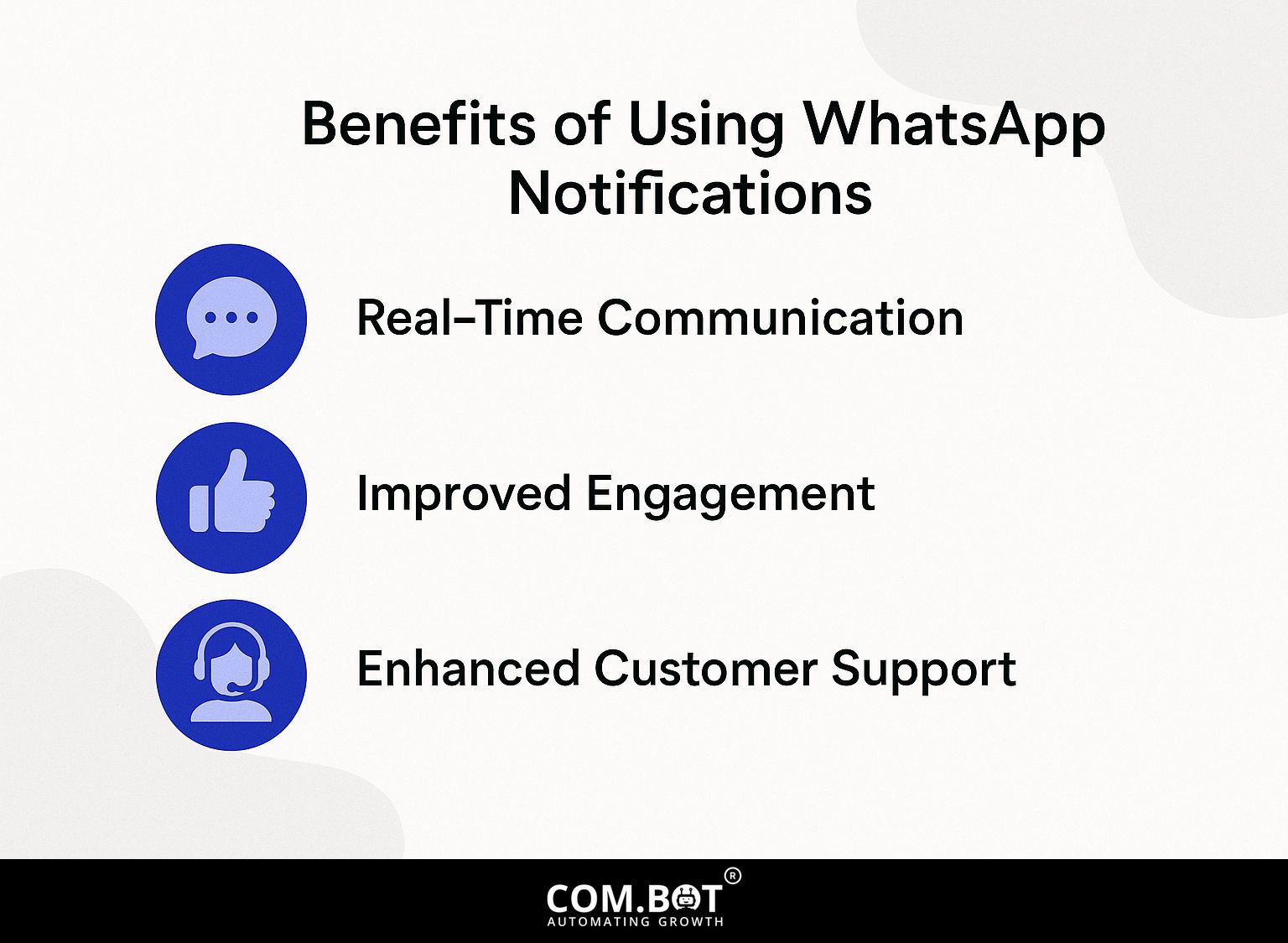
WhatsApp notifications are helpful because they allow people to communicate instantly, which greatly increases how much users interact and how happy they are with the service. For those interested in optimizing such interactions, exploring messaging with WhatsApp API can provide additional transactional benefits that enhance user satisfaction.
1. Real-Time Communication
With WhatsApp notifications, businesses can respond to customer inquiries within minutes, outperforming traditional email response times by over 80%.
Quick responses greatly improve customer satisfaction, with studies indicating that 60% of customers expect fast replies. To improve this, companies should set up automatic replies for after-hours questions so that customers get a quick response.
Integrating chatbots can handle frequently asked questions, further reducing wait times. For example, with tools like Twilio or Zendesk, businesses can create systems that sort inquiries by how urgent they are. This active approach reduces reply times and strengthens loyalty by addressing customer needs.
2. Improved Engagement
Regular notifications can improve user engagement rates by up to 40%, driving higher interaction levels in both personal and business contexts.
To manage notifications well, businesses can use WhatsApp’s broadcast feature, which lets them send messages to many contacts at once.
For example, XYZ Retail saw a 30% increase in customer interactions after employing targeted promotional notifications. Tools like Twilio can quickly send notifications and messages, simplifying communication.
Businesses should consider splitting their audiences to tailor messages, making them more relevant and encouraging engagement. Trying out different times for sending notifications helps find the best times when users are most likely to interact, improving how often they respond.
3. Enhanced Customer Support
WhatsApp notifications make customer support more efficient by enabling fast replies that satisfy customer needs and shorten response times.
By integrating WhatsApp into your customer support strategy, businesses can achieve up to a 50% improvement in response times.
For example, using WhatsApp Business API allows for automatic responses to common questions, letting agents focus on more difficult issues. Tracking metrics like response time and customer satisfaction ratings can demonstrate the effectiveness of this tool.
Businesses that start using WhatsApp often see a 20% rise in customers sticking around, as quick messaging helps build better connections and keeps customers returning.
Best Practices for Managing Notifications
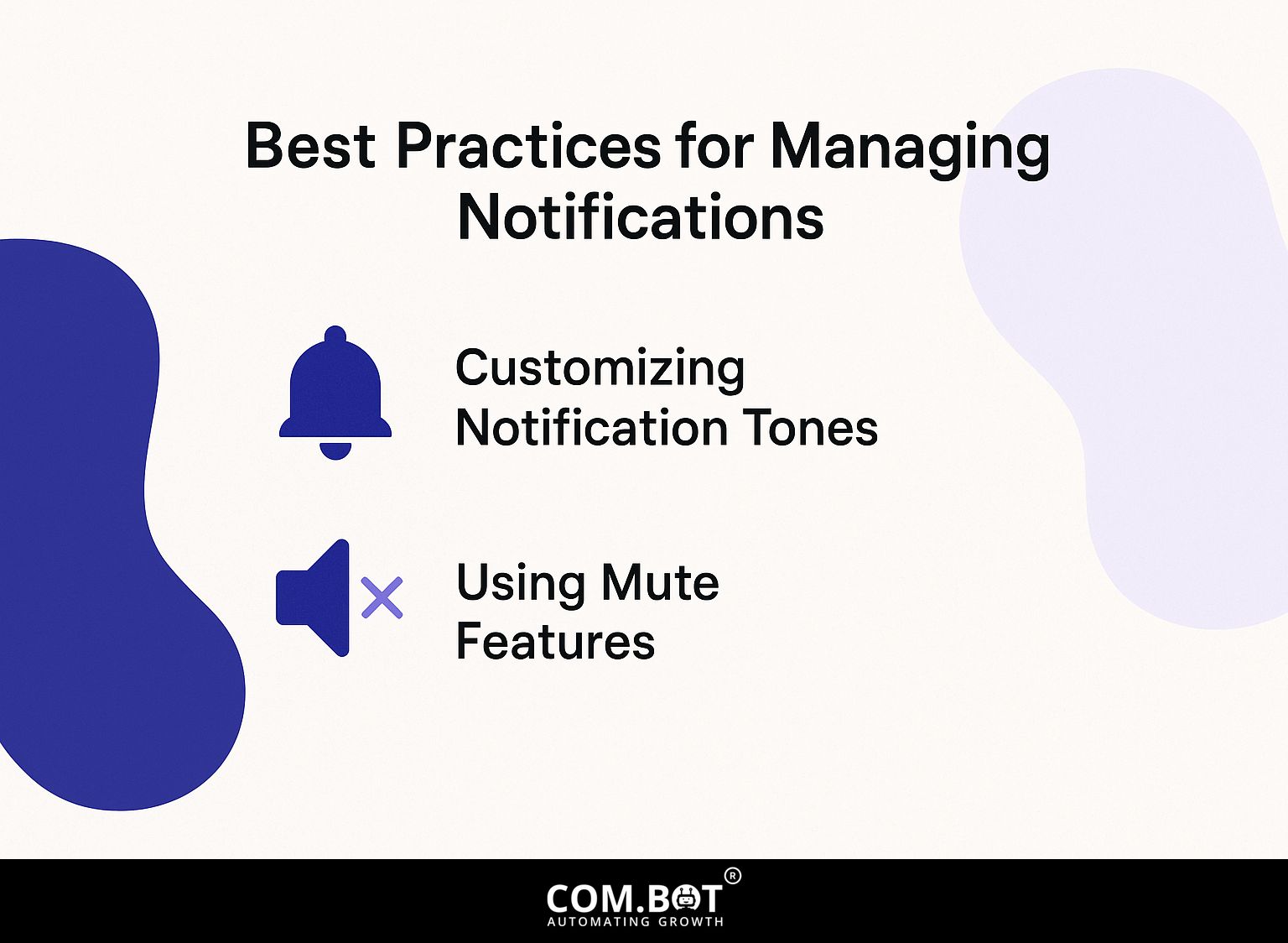
Handling WhatsApp notifications properly helps reduce stress and makes sure you receive important messages.
1. Customizing Notification Tones
By customizing notification tones, users can quickly identify the source of a message without looking at their device.
Go to the settings in your messaging app to choose different tones for certain contacts or groups. For example, in WhatsApp, select a chat, tap on the contact’s name, and choose ‘Custom Tone.’
You can select sounds from the pre-installed options or upload your own. On iOS, go to Contacts, select a contact, tap ‘Edit,’ and then ‘Text Tone’ to choose a unique alert. This simple customization helps prioritize responses, ensuring timely communication without distraction.
2. Using Mute Features
Utilizing the mute feature for less important group chats or contacts can help manage notification overload while maintaining focus.
- To effectively use the mute feature, consider the duration options available on most messaging apps. For instance, you can often mute notifications for 1 hour, 8 hours, or even until you manually unmute.
- For active group chats, mute them during your work hours and check in during breaks. Set reminders for important messages.
- Apps like Slack and WhatsApp allow you to customize notification settings further, ensuring you don’t miss critical updates while keeping distractions at bay.
Frequently Asked Questions
1. How do I set up WhatsApp notifications?
To set up WhatsApp notifications, open the WhatsApp app on your device and go to Settings. Then, select Notifications and toggle on the option for WhatsApp notifications. You can also customize the types of notifications you receive, such as message previews or sounds.
2. Can I receive WhatsApp notifications on my computer?
Yes, you can receive WhatsApp notifications on your computer by syncing your WhatsApp account with WhatsApp Web or the desktop app. This allows you to receive and respond to notifications on your computer when your phone is not nearby.
3. What are the benefits of using WhatsApp notifications?
The benefits of using WhatsApp notifications include being able to stay connected with your contacts in real-time, receiving important updates and messages instantly, and being able to easily respond and communicate with others without having to open the app.
4. Can I turn off WhatsApp notifications for specific contacts?
Yes, you can turn off WhatsApp notifications for specific contacts by going to their chat, tapping on their name at the top, and selecting “Mute notifications.” This will prevent you from receiving notifications from that specific contact, but you will still receive messages from them.
5. How do I know if someone has read my WhatsApp message?
To know if someone has read your WhatsApp message, look for two blue check marks next to your message. This indicates that the message has been delivered to the recipient’s device and they have read it. If you only see one check mark, the message has been sent but not yet read.
6. Can I customize the sound of my WhatsApp notifications?
Yes, you can customize the sound of your WhatsApp notifications by going to Settings, selecting Notifications, and choosing the option for “Notification tone.” You can choose from the pre-set sounds or select a different sound from your device’s storage.

